Products
Analogue Addressable Fire Alarm & Detection System
Addressing & Communication
Each device responds to interrogation & command from central control equipment. It communicates to the panel information on status, command bits, type, location and other informations that allows an alarm to be raised even when the device is not itself being interrogated. Message error checking is also provided. The detectors provide an alarm facility that automatically puts an alarm flag on the data stream & reports its address when the pre-set EN54 thresholds are exceeded. All the electronic components are in the detector but the location - information is held in the base with the help of a patented XPERT card, which eliminates, the risk of addressing errors during maintenance and service.
System Configuration:
The choice of detectors from our range folloes, well established principles of system design, that is, the optimum detector type will depend on the type of fire risk and fire load, and the type of environment in which the detector is sited.
Intelligent Fire Detectors :
For general use, smoke detectors are recommended since these provide the highest level of protection. Smoke detectors from our range may be lonisation, Optical or Multisensor types. It is generally accepted that lonisation types have a high sensitivity to flaming fires, widely used for property protection whereas Optical detectors have high sensitivity to smouldering fires, widely used for life protection.
The Multisensor is basically an Optical smoke detector and will therefore respond well to the smoke from smouldering fires. This detector also senses air temperature. This temperature sensitivity allows the Multisensor to give a response to fast burning (flaming) fires, which is similar to that of an lonisation detector. The Multisensor can therefore be used as an alternative to an lonisation detector.
Where the environment is smokly or dirty under normal conditions, a Heat detector may be more appropriate. It must be recognized, however, that any Heat detector will respond only when the fire is well established, generating a high heat output.
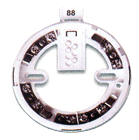
Mounting Base
There are four double terminal and one single terminal to isolate and provide continuity of an earth or shield. These are Zero Insertion Force Bases, particularly useful while fitting on suspended ceilings.
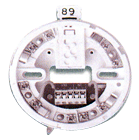
20d isolating Base
It senses and isolates short circuit faults on loops & spurs. The base is loop powered, polarity sensitive and accepts the XPERT card to set the associated device address.
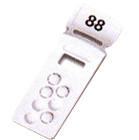
Xpert Card
A unique partented XPERT card provides simple, user friendly and accurate identification of detector location whereby in the base, is read by any detector once it is plugged in.
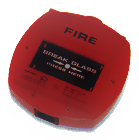
Manual Call Point
When operated it interrupts the polling cycle and reports its address in less than a second.

Isolators
'Stand-alone' isolators, which have their own bases, may be used instead of isolating bases. The isolators are wired to a loop between detectors or other devices.
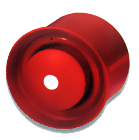
Loop-Powered Sounders
There are two types of loop powered sounders available, one ceiling-mounted (85dB) and one stand-aone (100 dB)









